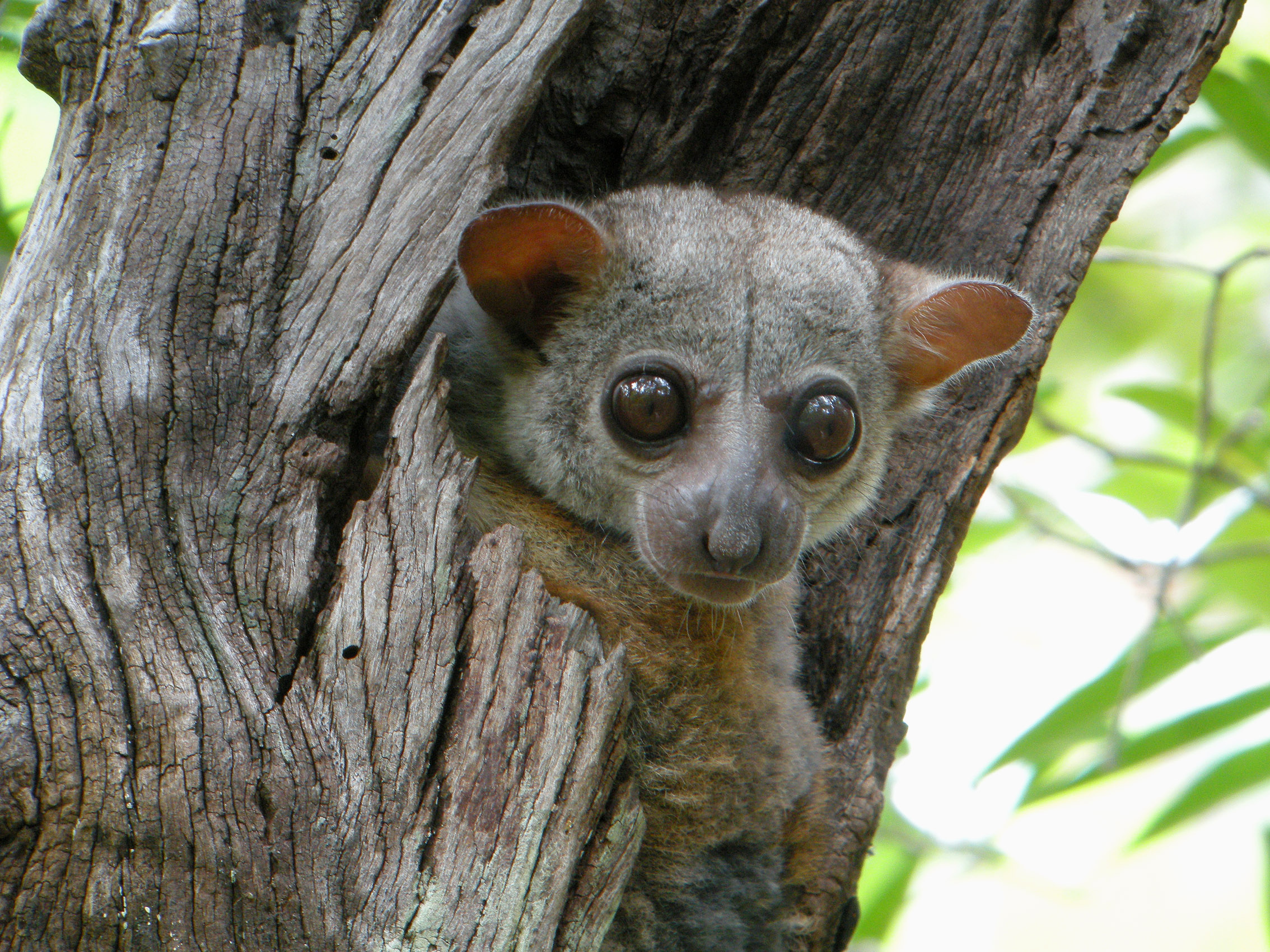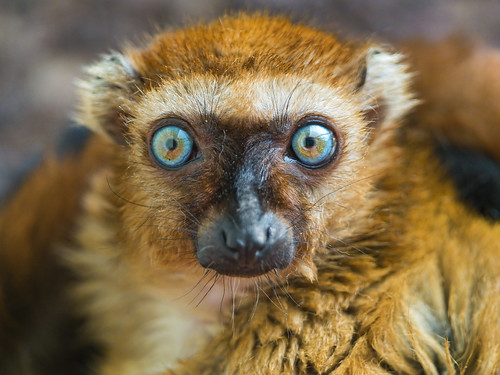The Lemurs, by Sharon White.
Out of all the primate's the Lemur's are the most diverse. Anyone who watched
the BBC's “Madagascar” would've been enthralled with the footage showing off
the primates that are only found on the island. With nearly 100 known species
that live in all areas and all habitats of Madagascar, Lemur's have a lot of
weird and wonderful physical and behavioural adaptations. Some of the species
are nocturnal, active only in the daylight or both. Their diet ranges from
fruits, leaves and bamboo to nectar and insects. Their physical sizes range
from the smallest of primate species' Mouse Lemurs being a tiny 1oz, to the
Indri at about18lb's. Social behaviours range from solitary lifestyles,
monogamous pairs and large, complex social groups. Throughout the Lemur's,
female dominance is typical and is found in very few other primate species and
even rarer throughout mammals.
 |
| Gray Mouse Lemur |
 |
| Indri Lemur |
Here's some examples of the weirdness between different Lemur species:
- Mouse, Dwarf and Fork-marked Lemurs are known for having seasonal periods of torpor, like hibernation, especially during the dry season when food supplies decrease. As is common with hibernating species, it's common for individuals to fatten themselves up and these small primates, increase volume in their tails (a fat reserve) before going into seasonal torpor. However, this activity varies even on a population level, some individuals can go into torpor and others will not.
 |
| Fork marked/crowned Lemur |
- Dwarf Lemurs hold branches and pick objects in between their second and third fingers, which is in contrast to the other Prosimian species and more like their South American cousins.
 |
| Fat-Tailed Dwarf Lemur |
- Sportive Lemurs are the smallest folivorous primate, which is a rare diet for a nocturnal mammal. The lack of sugars in their diet has meant that Sportive Lemurs have small home-ranges and short travel distances.
 |
| Sportive Lemur |
- The Lac Alaotra Bamboo Lemur is unique, amongst all primates, as it is restricted to marshland surrounding Lake Alaotra in eastern Madagascar and live amongst the stands of reeds and papyrus. There are two sub-populations for this species and are thought to swim.
 |
| Lac Alaotra Bamboo Lemur |
There is one species of Lemur, which is my personal favourite,
that have blue eyes. The Sclaters Lemur, aslo known as the Blue-Eyed Black
Lemur, is the only primate other than humans to be born with blue eyes.
 |
| Female Sclaters Lemur |
Lemur species are amongst the most endangered species in the
world. Six species are on the top 25 most endangered primates in the world.
Those species include the Red Ruffed Lemur, Blue-Eyed Black Lemur, Northern
Sportive Lemur, Silky Sifaka, Madame Berthes Mouse Lemur and the Indri. All
these species are very different in their shape, size, diet and habitat, but
all populations are declining due to habitat loss and hunting, amongst other
things.
 |
| Silky Sifaka |
Despite, the small amount of information provided here, you can see how amazing
these primates are and how we really need to help protect them for future
generations! To learn more about how you can help the Lemurs check out the Duke Lemur Center.
 |
| Ring Tailed Lemur |
About the author:
Sharon White is passionate about primates and wildlife in general, but she simply adores Lemurs. Sharon spends her time wither working as a photographer or with the Cheshire Wildlife Trust, passing on her passion for the natural world.
______________________________________________________
Disclaimer:
"The views and opinions expressed in the Diary of a Primatologist blog (except guest posts) are purely my own and are not in any way linked to any organisations I may represent or work with unless otherwise stated. All photos are my own unless otherwise stated and a source will be provided where other photos are used. If they are your photos and you would like them removed please just ask. The author retains full copyright for all content and photos and written permission is required before their use. The owner of the site is not liable for any content accessed through links posted."
Picture Sources:
Gray Mouse Lemur - http://www.phocus.org/images/animals/mammals/primates/lemurs/mmu-juv-lge-0213.jpg
Indri Lemur - http://media.npr.org/assets/img/2013/02/01/indri-lemur_wide-fcf5751b5d196f15456503c6c6bdc6cf7f98a974.jpg
Fork-marked/crowned Lemur - http://naturefiles.files.wordpress.com/2010/12/1112434235_2010_10_madagascar2_239.jpg
Fat-tailed Dwarf Lemur - http://dharing.zenfolio.com/img/s1/v6/p674106315-3.jpg
Sportive Lemur - http://upload.wikimedia.org/wikipedia/commons/7/77/Lepilemur_edwardsi.jpg
Lac Alaotra Bamboo Lemur - https://blogger.googleusercontent.com/img/b/R29vZ2xl/AVvXsEgCWZCkFm1gFG2VBiQ7JWk2u1YqUc70o8kBMeeGrBYZRlXVJXj1p-RG9tmopdWo63EgVCOtS-YwhMb6tr0-qxDdkLhsqTvt853fxwkYG__VM0lxuP6hsOOaSlWBoYpneUm_GA4n-aG9guq5/s640/lemur+22.jpg
Female Sclaters Lemur - http://farm9.static.flickr.com/8078/8291308573_5ec41214fe.jpg
Silky Sifaka - https://blogger.googleusercontent.com/img/b/R29vZ2xl/AVvXsEhZhEr3CBVs-AQmP26KzDQgwsIxWmMF7zVKg6Vw-0dv8nMa4bLC0SFZ_V6tFciTdiWXrcudTNojIgu0j_MB9Ln6v9_n2JTky4xpqruDxPDUl-EBWPKk-OgDvQFayN-PDmG8B4MGCz3T-SM/s1600/CD5294-02.jpg
Ring-Tailed Lemur - http://images.fineartamerica.com/images-medium-large/ring-tailed-lemur-lemur-catta-portrait-pete-oxford.jpg
No comments:
Post a Comment